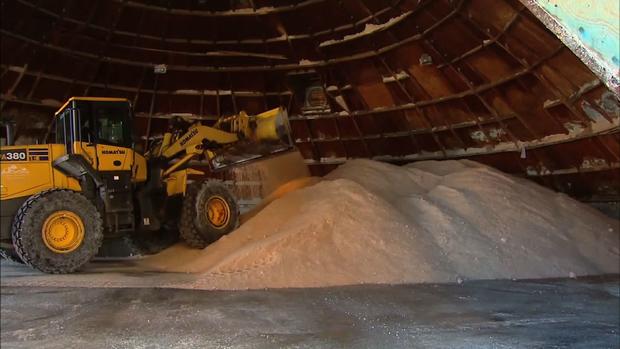How Does MnDOT Decide Which Chemicals To Use On Roads?
MINNEAPOLIS (WCCO) -- This week is a reminder that winter is not going anywhere.
We have had some tough commutes the past couple of days, and more snow is on the way.
When the roads get coated in ice and snow, the Minnesota Department of Transportation has a number of different treatments to use to keep us safe.
Salt is one option, but there are others.
Kevin Gutknecht is a spokesperson with MnDOT, and he knows that winter can linger. His department is in charge of keeping us safe, and keeping our bumpers intact.
"The primary chemical that we use is sodium chloride, essentially table salt," Gutknecht said.
Salt does not melt ice -- it actually lowers the freezing point of water. That is why you still see slush and puddles on the roads on cold days.
But salt only works at 15 degrees or higher, which is why MnDOT will sometimes use magnesium chloride, which is effective to about 3 degrees. They also use calcium chloride, which can work all the way down to minus-10 degrees.
"This year we're paying about $60 a ton for salt. Calcium chloride and magnesium chloride are much more expensive, multiple times more expensive," Gutknecht said.
Sometimes, during extreme cold, MnDOT will mix calcium chloride with salt. Sand is another alternative, but it does not react with ice and loses its traction over time.
But we pay the price in the spring for better winter driving.
"There's no question that sodium chloride, any of the chlorides, are not good for the environment. We know that," Gutknecht said.
About 20 million tons of road salt are used annually in the United States, and in the spring it washes into our water system. That is why MnDOT is always looking at alternatives.
"There are some things that we've been looking at. We have looked at beet juice ... There's an acetate mixture that we've looked at," Gutknecht said. "Haven't been able to find anything yet, but we continue to look."
While they still look at more environmentally-friendly options, Gutknecht said technology has allowed them to figure out just the right amount of salt to use during a storm so they don't use more than they should.




